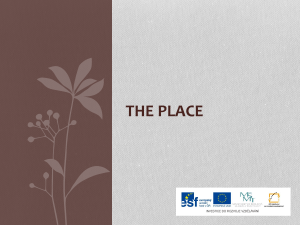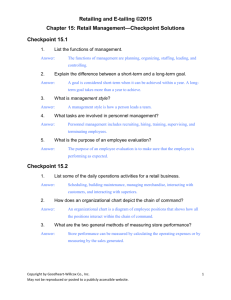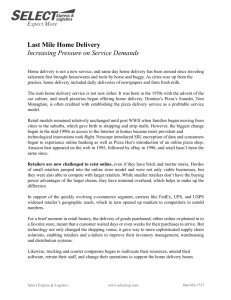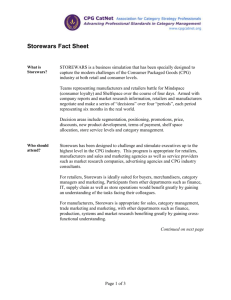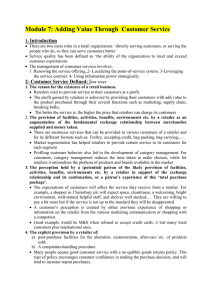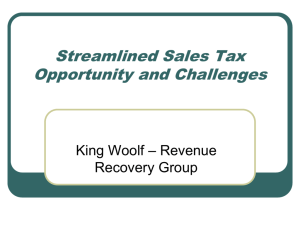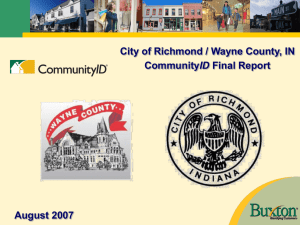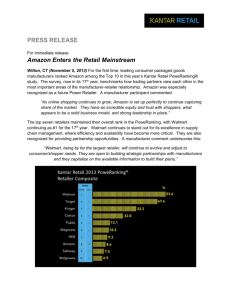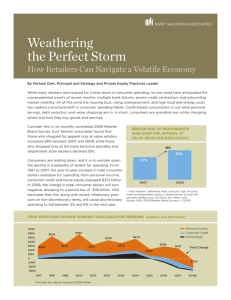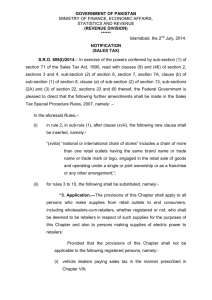Retailing and E-tailing 2015 Chapter 5 Checkpoint Solutions
advertisement
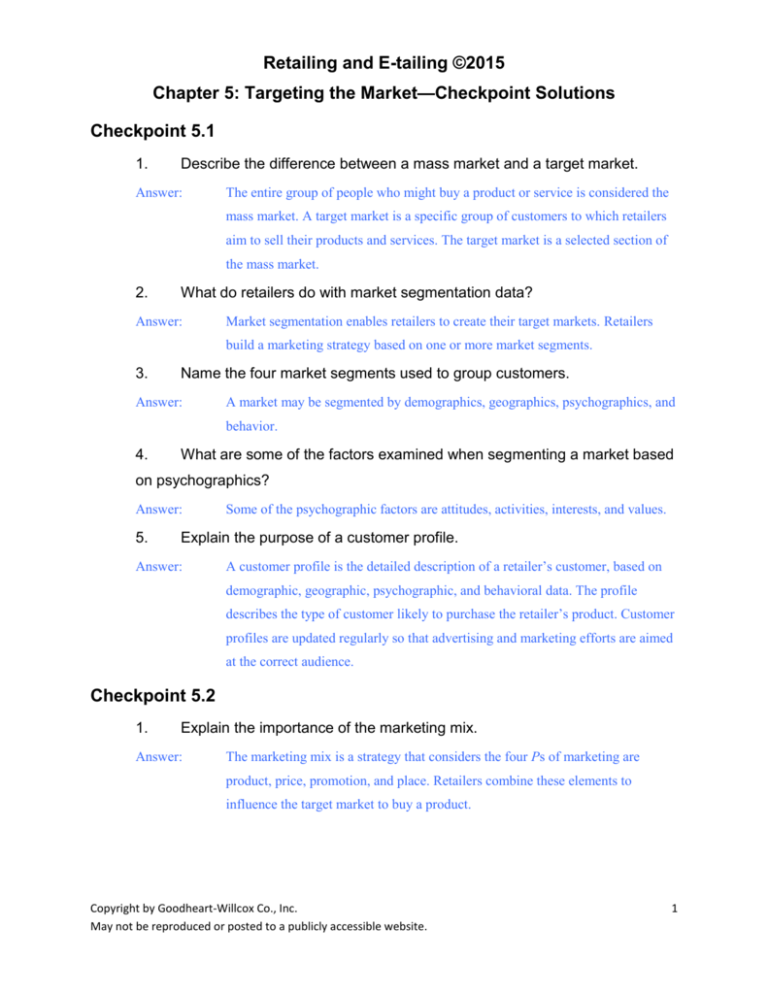
Retailing and E-tailing ©2015 Chapter 5: Targeting the Market—Checkpoint Solutions Checkpoint 5.1 1. Describe the difference between a mass market and a target market. Answer: The entire group of people who might buy a product or service is considered the mass market. A target market is a specific group of customers to which retailers aim to sell their products and services. The target market is a selected section of the mass market. 2. What do retailers do with market segmentation data? Answer: Market segmentation enables retailers to create their target markets. Retailers build a marketing strategy based on one or more market segments. 3. Name the four market segments used to group customers. Answer: A market may be segmented by demographics, geographics, psychographics, and behavior. 4. What are some of the factors examined when segmenting a market based on psychographics? Answer: 5. Some of the psychographic factors are attitudes, activities, interests, and values. Explain the purpose of a customer profile. Answer: A customer profile is the detailed description of a retailer’s customer, based on demographic, geographic, psychographic, and behavioral data. The profile describes the type of customer likely to purchase the retailer’s product. Customer profiles are updated regularly so that advertising and marketing efforts are aimed at the correct audience. Checkpoint 5.2 1. Explain the importance of the marketing mix. Answer: The marketing mix is a strategy that considers the four Ps of marketing are product, price, promotion, and place. Retailers combine these elements to influence the target market to buy a product. Copyright by Goodheart-Willcox Co., Inc. May not be reproduced or posted to a publicly accessible website. 1 2. Explain the concept of product strategy. Answer: Product strategy involves selecting the products and services that will meet customer needs and wants. Retailers attempt to provide a combination of products that will generate greater sales together than if the products were sold by themselves. 3. What are the three additional Ps that make up the retail mix? Answer: 4. The three Ps of the retail mix are personnel, presentation, and process. Explain presentation strategy, or visual merchandising, that takes place in a retail business. Answer: Presentation strategy is the process of selecting elements that represent a retailer’s brand, such as music playing in the store, uniforms for the staff, and other elements that help build a brand. 5. Explain controllable and uncontrollable factors affecting the marketing environment. Answer: Retailers make decisions that influence the retail mix. Decisions such as how to price and promote products are completely controlled by the retailer. Uncontrollable factors (like unemployment rates, consumer trends, and technology developments) are beyond the control of the retailer. The marketing and retail mix often cannot change uncontrollable factors. Checkpoint 5.3 1. Describe the consumer decision-making process. Answer: The first step in the decision making process is to identify a need or want. Once the need for a product or service is clear, consumers examine how they can fill that need. After collecting information, consumers weigh their options for filling the need. Once options have been weighed and the best value is determined, consumers make a purchase to fill their need. The decision-making process does not end until consumers have evaluated their decision. They consider the pros and cons of their purchase, and sometimes question whether or not they made the right decision Copyright by Goodheart-Willcox Co., Inc. May not be reproduced or posted to a publicly accessible website. 2 2. List and describe the three primary motives that explain why people buy. Answer: A rational buying motive means that a customer makes his or her purchase for a practical reason. An emotional buying motive is a motive that appeals to the way a customer thinks or feels. Patronage buying motives are based on loyalty and suggest that a customer prefers to buy a particular brand or from a particular store. 3. What are the three main factors that influence consumer purchasing? Answer: The three main factors that influence consumer purchasing are psychological influences, social influences, and situational influences. 4. Summarize Maslow’s Heirarchy of Needs theory. Answer: Maslow’s theory states that there are five different types of needs that range in importance. These needs are divided into five categories: physical; security; love and acceptance; esteem; self-actualization. Once needs at the base level are fulfilled, a person can attempt to fulfill higher-level needs. 5. What are the three types of social influences on purchases? Answer: Three types of social influences on purchases are culture, family, and peers. Copyright by Goodheart-Willcox Co., Inc. May not be reproduced or posted to a publicly accessible website. 3

